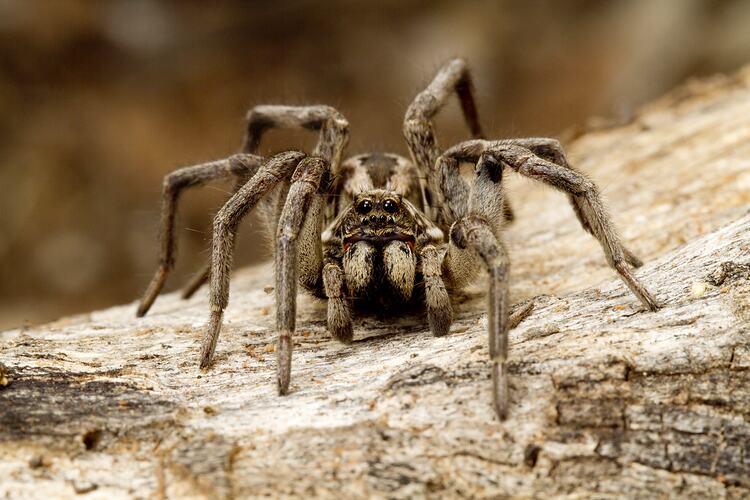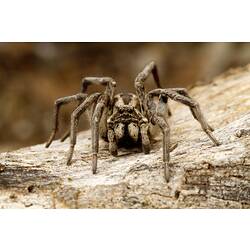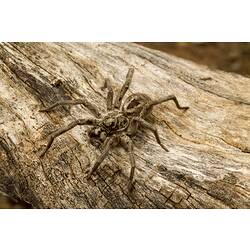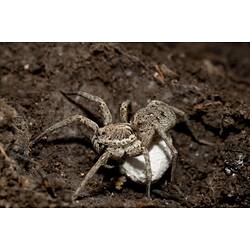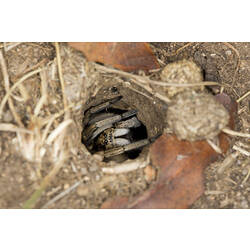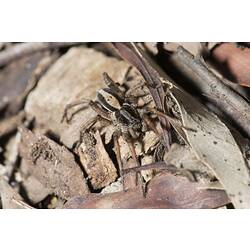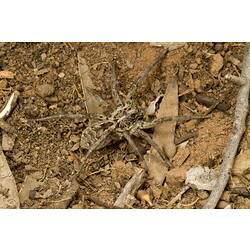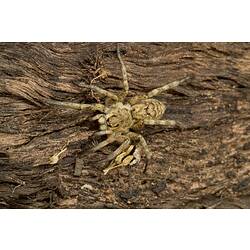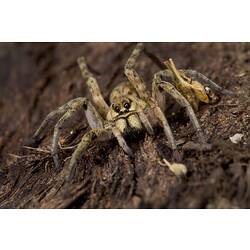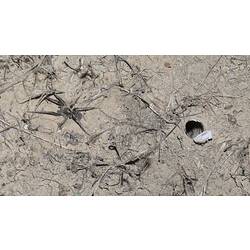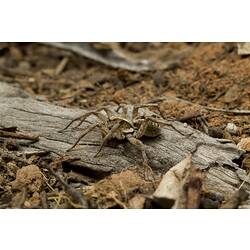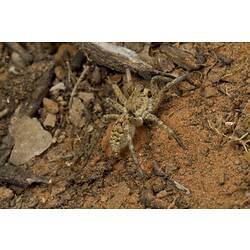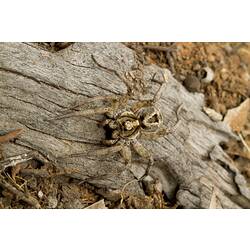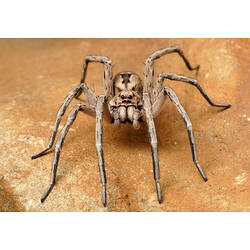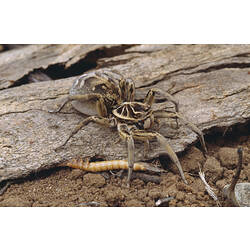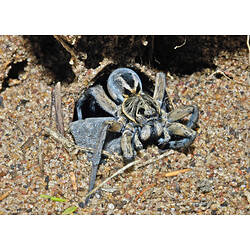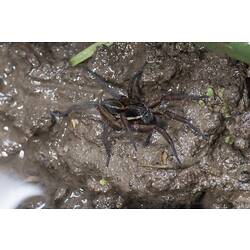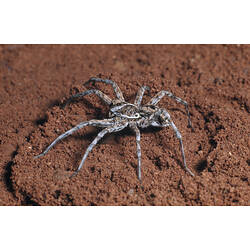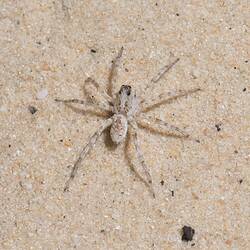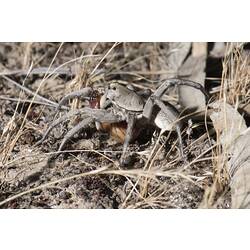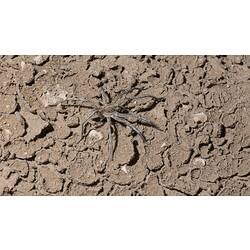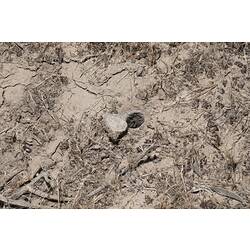General Description
Body ranges in colour from black to orange-grey, often with striking grey patterns on the carapace. There are eight eyes, two large eyes on front of the cephalothorax (fused head and thorax), above a curved row of four smaller eyes and two other eyes further back. Males have large bulbs on their pedipalps (second pair of appendages). Body up to 3 cm long, females typically larger than males.
Biology
Wolf Spiders are modern spiders, or araneomorphs, an infraorder of spiders. They differ from many other spiders through their prey capture technique. Wolf spiders are active hunters that chase down their prey. Some Wolf Spiders shelter in permanent vertical burrows, often using discarded invertebrate burrows but will dig their own if necessary. Others wander during the day. Males court female through a series of leg drums and vibrations while 'dancing' with his forelegs. If the female is receptive she will allow him to approach. The male will then present the female with a sperm package on one of his palpal bulbs, (as spiders do not have penises) which she will store and use to fertilise her eggs. Sometime after fertilisation the female produces an egg sac by weaving a circular mat of fine silk onto which she deposits a hundred or more eggs. She then weaves silk around the eggs, draws up the sides of the mat and sews it into a silken ball. The size of this silken ball is often about the same as the spider itself. Using strong silken threads, she then attaches the egg case to the under surface of her abdomen using her spinnerets (the organs that make silk) and carries it with her, even when hunting. She incubates the eggs during the day by facing the egg case towards the sun and slowly turning it. Thirty to forty days later the eggs hatch producing up to 200 spiderlings. The spiderlings do not immediately disperse. Instead they climb up their mother's legs and ride on her back for a few weeks, often covering her several layers deep. The spiderlings do not share any of the prey that the mother catches, and if they fall off they are not rescued. When they are ready to fend for themselves they disperse via silk strands. This maternal care of the spiderlings is unusual in the spider world. Wolf spiders are not aggressive by nature but they will defend themselves if provoked. The anatomy of their feet - they have three claws and no hair tuffs on the tips of their legs - means they cannot negotiate slippery surfaces. This makes them good pets because they are easy to house and care for in a glass jar or terrarium.
Distribution
Mainland Australia and Tasmania.
Habitat
On the ground in a range of habitats, including urban gardens.
More Information
-
Animal Type
-
Animal SubType
-
Brief Id
Large spiders with two large eyes on front of the cephalothorax above a curved row of four smaller eyes. Often active during the day.
-
Colours
Brown, Grey
-
Habitats
-
Where To Look
-
Diet
Invertebrates
-
Hazards
Local reaction if bitten. No records of any serious reactions associated with bites of humans, but cats and possibly dogs might be at risk.
-
Endemicity
-
Conservation Statuses
CITES: Not listed, FFG Threatened List: Not listed, EPBC Act 1999: Not listed, IUCN Red List: Not listed
-
Web
Hunter
-
Taxon Name
-
Common Name
Wolf Spiders
-
Kingdom
-
Phylum
-
Subphylum
-
Class
-
Order
-
Infraorder
-
Family
